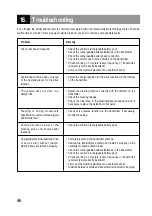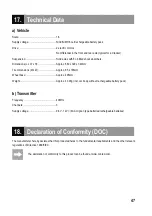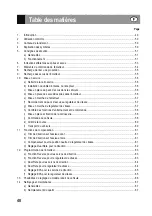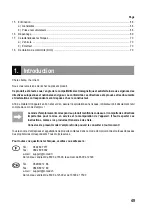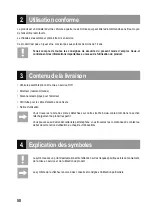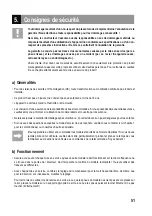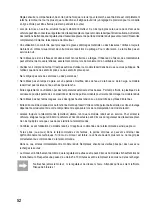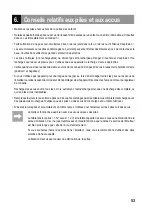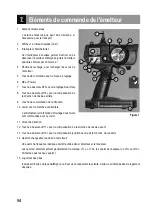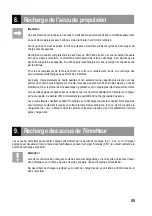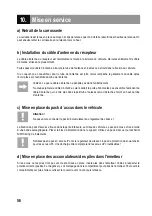
44
14. Cleaning and Maintenance
a) General Information
Prior to cleaning or servicing, turn the vehicle off and completely separate the accumulator pack from
the drive control unit. If you drive the vehicle beforehand, leave all parts (e.g. engine, drive control, etc.)
to cool down completely first.
Clean the whole vehicle of dust and dirt after driving, e.g. with a long-haired clean brush and a vacuum cleaner.
Compressed air aerosols can also be helpful.
Do not use cleaning aerosols or conventional household cleaners. This may damage the electronics
and lead to discolouration on the plastic parts or the body.
A soft cloth, slightly dampened can be used to wipe the car body. Don’t rub too hard otherwise there will be scratch
marks or the paint will get damaged.
At certain intervals maintenance works and function controls that ensure trouble-free operation and long-term
roadworthiness, are to be carried out on the vehicle.
Motor vibrations and shocks during driving can loosen parts and screw fittings. This is why you should check the tight
position of wheel nuts and all screw fittings. The same applies for other parts of the vehicle.
Check whether the wheels are still seated properly on the rims. Due to the high stress on the vehicle, the tyres on this
vehicle are screwed to the rim, a ring on each side of the rim holds the tyre in position.
All ball bearings or gears in the vehicle have been provided with suitable lubricants by the manufacturer. Normally no
relubrication is necessary.
If worn-out or defective vehicle parts must be replaced, use original spare parts only.
Make sure that no cables are pinched or caught.
Check the model for damage before each use. If you notice any damage, the car must not be used anymore and has
to be taken out of operation.
b) Changing Crystals
There is not allowed to be any other transmitter/models with the same frequency in the range of the transmitter, as the
transmitters will interfere with each other. As a result, the models no longer respond correctly to the transmitter commands.
If there are other model vehicles in your range, talk to the other operators about the frequencies they use.
Only use suitable accessory crystals for the transmitter and the receiver.
Prior to a crystal change, first turn off the vehicle and then the transmitter.
Transmitter crystals are marked with "T" or "TX", receiver quartzes with "R" or "RX". Don't mix up the crystals, as
otherwise the model won't function correctly.

















